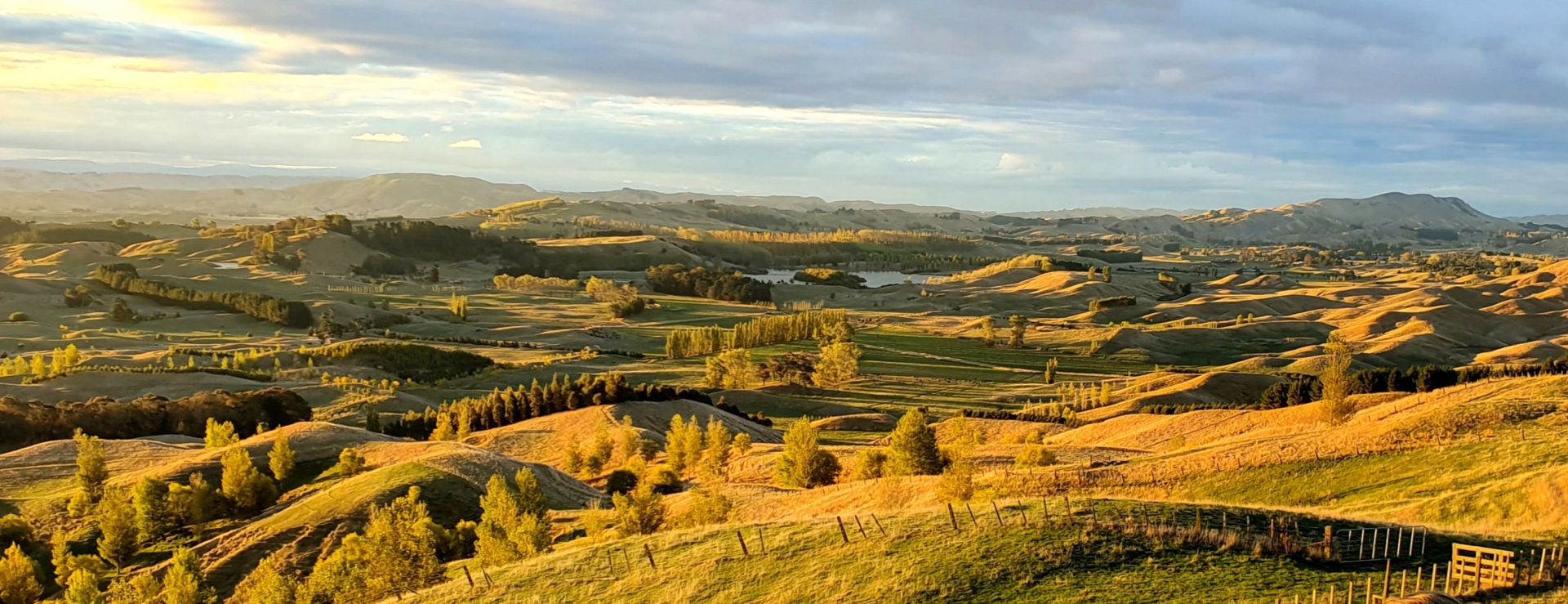The Farm
The land currently known as Mangarara Station has been transformed over the last 200-700 years.
Prior to human settlement this land would have been a mix of mature native forests and wetlands, teeming with birds and insects. In the mid 1800s the land was cleared by European settlers (one of the first in Hawke’s Bay) and was part of the 7000 acre Elms Hill Station. The existing drains throughout the Mangarara flats were dug by hand in the late 1870s and extended in 1914-1918. Elms Hill Station was subdivided and the newly named Mangarara Station was purchased by the Tiffen family who farmed for many generations until selling to Greg’s parents in 1990.
Greg and Rachel have transitioned the farm away from a traditional sheep station (running approximately 3000 ewes) to a diverse and integrated farm that seeks to balance ecosystem restoration and the production of healthy, nutritious food.
Some of the major changes include:
- A partnership with Air New Zealand in 2008 which led to the planting of 85,000 native trees adjacent to a small remnant of virgin native forest.
- Planting native and exotic trees around farm dams (small lakes) and in shelter belts to protect soils, provide shade & shelter for livestock, sequester carbon and enhance biodiversity.
- Building a small dairy shed, introducing Berkshire pigs and developing a composting system.
- Building the Mangarara Eco Lodge (commissioned in 2015) to accommodate, educate and inspire through generous hosting that includes farm tours, workshops & events.
- Moving to Holistic Management and Planned Grazing – a management system designed to maximise ecosystem, animal and human well-being through grazing more mature pastures on longer, planned rotations.
- Partnering with Million Metres Streams and successfully raising over $30,000 to plant the riparian margin of Horseshoe Lake, a 35 hectare lake and wetland that borders the farm and Eco Lodge.
- Selling our beef directly to Butcher's in Hawkes Bay and Auckland to help connect people back to healthy food and farming, while providing a stable financial platform to enable continued ecosystem restoration and innovation of our regenerative farming practises.

We now raise:
- We are predominantly a beef farm, with 100 Angus breed cows, 350 angus heifers and 190 dairy heifers we contract graze.
- 20 dairy cows are milked seasonaly providing milk for approximately 20 Berkshire pigs, plus a little for ourselves!
- Our sheep numbers are currently minimal.
Following Holistic Management principles, our grazing and fertiliser management approach aims to improve soil health, sequester carbon in our soils, and promote healthy plants and animals. We are developing a soil carbon project to better measure the impact of our management on soil carbon levels, and hope that this will inform a larger project throughout New Zealand.
Furthering our history of planting lots of trees (105,000 and counting) we hope to:
- Continue extending our native reforestation towards the back of the farm;
- Develop a ‘forest of food’ in the paddock adjacent to the Eco Lodge, with eventual produce available free as ‘Pick Your Own’ for all donors and friends;
- Develop and expand silvopasture systems that integrate trees and pasture in a way that allows us to grow better quality pasture, create lower stress environments for our animals through increased shade and shelter, and produce a mix of fruit, nuts, timber and animal fodder.
What our previous guests have said
WOW!! Mangarara Eco Lodge and Farm is absolute Paradise. Rachel and Greg go above and beyond to make your stay even more wonderful. Fantastic hosts. Thank you
Nigel & Wendy, Hawkes Bay, New Zealand
Perfect getaway weekend Opening up the doors to a magnificent view is what started our weekend off right. The location is stunning. The owners have thought of
Newports, Hawkes Bay, New Zealand
Your hospitality was second to none. Beautiful venue and amazing food! You truly have a slice of paradise where you are. All our residents that came along had
Jared, Sommerset, Hawkes Bay, New Zealand

